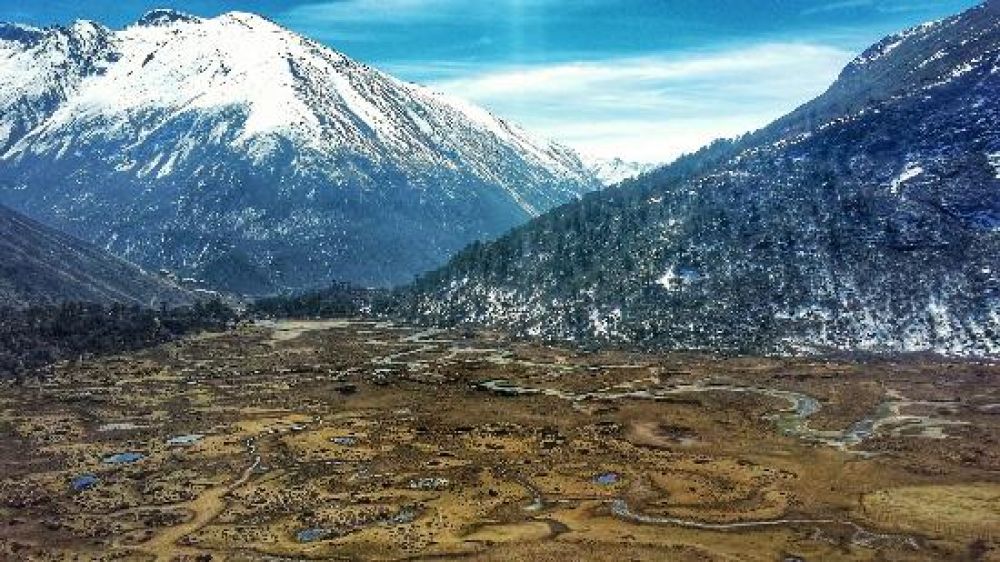

Kala Patthar, situated in the serene and beautiful terrain of Lachen in North Sikkim, India, is an increasingly popular destination for tourists seeking to experience the grandeur of the Himalayas up close. The name "Kala Patthar" translates to "Black Rock" in Hindi, showing the prominence of stark and impressive landscapes in the region. Despite being in a remote location, Kala Patthar's tourism has a relatively recent history but one that is dynamically growing.
Historically, the area around Lachen and Kala Patthar has been sparsely populated, inhabited primarily by the indigenous Lachenpas, a Bhutia community with its own distinct culture and traditions. This part of Sikkim was less accessible to the outer world until modern infrastructure development. The rugged terrain and the harsh climatic conditions further limited the influx of visitors in the past.
The turn of the 21st century saw a change in this trend with the active promotion of Sikkim as a prime tourist destination by the state and national tourism departments. Accessibility improved dramatically after the construction of better roads, leading to a smooth travel experience even for those headed to offbeat locations like Kala Patthar.
In recent years, Kala Patthar has emerged as a must-visit destination for adventure enthusiasts and nature lovers. The pristine environment, scenic vistas of the snow-laden mountains, and the thrill of witnessing a landscape that changes dramatically with the seasons are among the key attractions.
Ecotourism has become a significant trend in the region, with sustainable practices being introduced to ensure minimal environmental impact. This includes community-guided treks and tours, which support the local economy and provide visitors with an authentic experience of the native Lachen culture.
Adventure tourism is also gaining ground, with trekking and mountaineering being the most sought-after activities. Tourists often combine their visit to Kala Patthar with a trek to the famous Gurudongmar Lake, one of the highest lakes in the world.
In keeping with the global shift towards wellness, health and wellness tourism is also carving its niche in Kala Patthar. Visitors come here to partake in yoga and meditation retreats, seeking tranquillity and a break from the hustle of city life amidst serene mountain backdrops.
Moreover, due to its proximity to the Indo-China border, visitors also need to obtain permits, and thus, regulated tourism helps in maintaining the ecological balance of this sensitive zone.
Despite its potential, tourism in Kala Patthar faces challenges such as limited accommodation facilities, unpredictable weather, and the need for preserving fragile ecosystems. However, the local administration is working towards sustainable solutions like constructing eco-friendly lodges and promoting responsible tourism practices.
The future of tourism in Kala Patthar looks promising, with continuous efforts to find the right balance between welcoming tourists and preserving the natural beauty and cultural heritage of the region. With its untouched beauty and the promise of a unique adventure, Kala Patthar beckons travelers from all over the world to explore its breathtaking landscapes and experience the warm hospitality of its people.